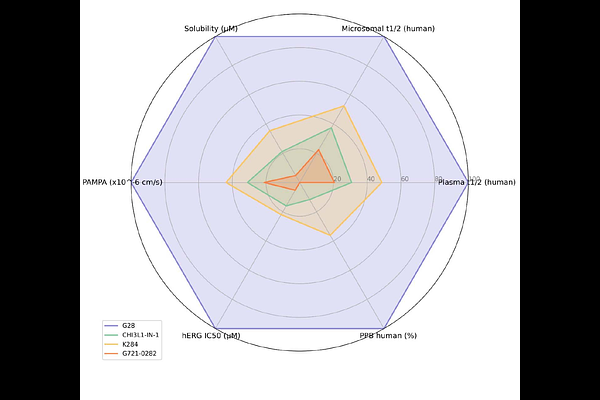CHI3L1-Targeted Small Molecules as Glioblastoma Therapies: Virtual Screening-Based Discovery, Biophysical Validation, Pharmacokinetic Profiling, and Evaluation in Glioblastoma Spheroids

CHI3L1-Targeted Small Molecules as Glioblastoma Therapies: Virtual Screening-Based Discovery, Biophysical Validation, Pharmacokinetic Profiling, and Evaluation in Glioblastoma Spheroids
Nada, H.; Zhang, L.; Kaur, B.; Gabr, M.
AbstractGlioblastoma (GBM) remains the most aggressive primary brain malignancy with a 10% three-year survival rate. Chitinase-3-like protein 1 (CHI3L1) has emerged as a critical factor in the progression of GBM progression, invasion, and treatment resistance. However, small molecule inhibitors targeting CHI3L1 are largely unexplored. Microscale thermophoresis (MST) investigation of the direct binding potential of reported CHI3L1 modulators (K284, G721-0282, CHI3L1-IN-1) revealed modest to undetectable direct CHI3L1 binding affinity. Herein, pharmacophore-based virtual screening of in-house library resulted in the discovery of G28 as the most potent small molecule CHI3L1 binder reported to date. The CHI3L1 binding affinity of G28 was validated using MST and surface plasmon resonance (SPR). To evaluate the GBM-modulatory potential of G28, we conducted comprehensive pharmacokinetic and 3D spheroid studies alongside established CHI3L1 modulators. G28 demonstrated outstanding bioavailability and low toxicity, addressing key limitations faced by previous CHI3L1-targeted strategies. Notably, in 3D GBM spheroid models, G28 significantly outperformed reported CHI3L1 small molecule modulators, showing the most pronounced dose-dependent reductions in spheroid weight, migration, and viability. These findings position G28 as the most promising CHI3L1-targeted small molecule to date and a compelling candidate for GBM therapeutic development.